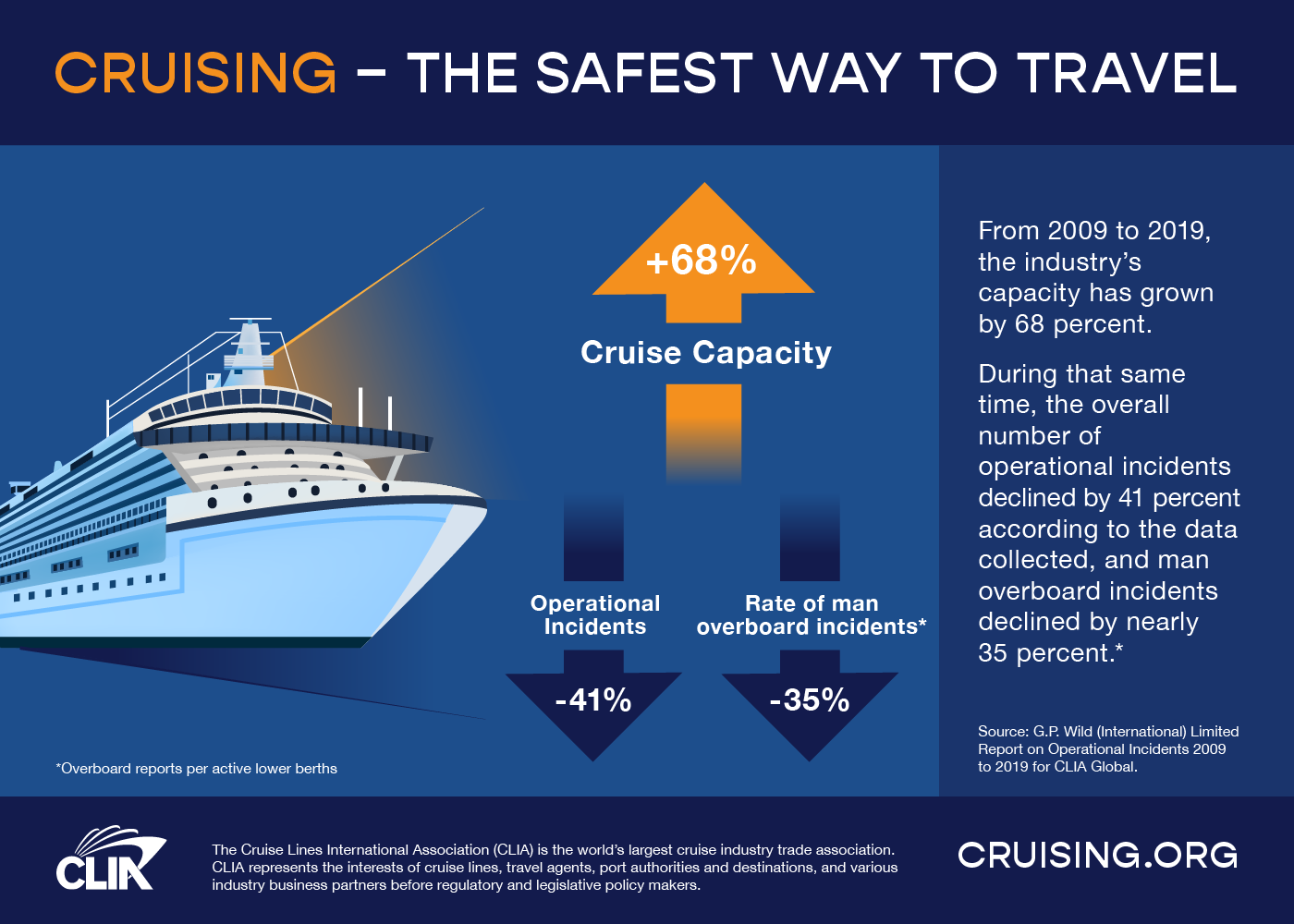Safety At Sea
For Cruise Lines International Association (CLIA) and its Cruise Line Members, the safety of guests and crew is the highest priority and is fundamental to their operations. Even with an increase in cruise capacity, cruise lines have maintained an exceptional safety record – making cruising one of the safest ways to travel. In fact, cruise travel is safer than virtually every other form of travel.

A study by GP Wild analyzing cruise ship operational incidents shows that while worldwide cruise ship capacity grew by more than 55 percent from 2009 to 2018, over that same period the number of operational incidents has trended down 37 percent, making cruise lines' safety record ahead of other modes of leisure transportation.
Ensuring Safety at Sea
- Crewmember Training: Crewmembers receive robust training in safety, security and first aid to prevent and respond to potential emergency situations.
- Heavily Scrutiny: Cruise ships are among the most scrutinized vessels at sea. With oversight beginning at design and construction, the International Maritime Organization (IMO), flag and port state authorities, and classification societies provide strict safety standards and oversight throughout a ship’s operations.
- Constant Improvement: CLIA and its Cruise Line Members constantly work to improve safety by reviewing operational procedures to improve safety processes and technology. With new polices implemented and continual meetings with an Independent Panel of Experts comprised of top maritime and transportation professions to provide advice on measures to enhance safety, the cruise industry is always looking to improve.
- Precautions: Every cruise ship must be equipped with enough survival craft, including life boats and life rafts, to accommodate at least 125 percent of the number of persons on board. In addition, all survival craft must be tested and meet rigorous international guidelines.
Cruise ships today are the safest that have ever sailed, thanks to the rules, regulations, and technological innovations that govern their design.

